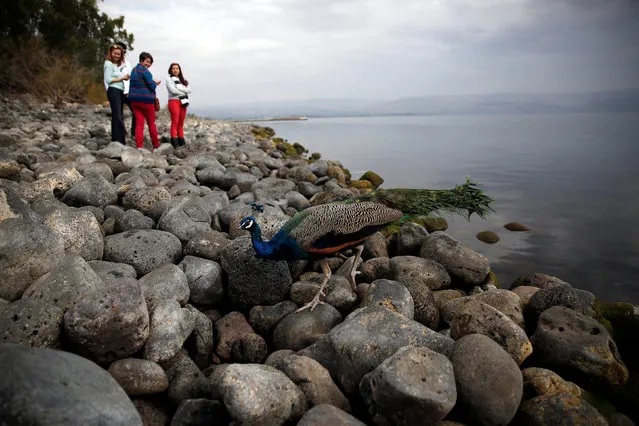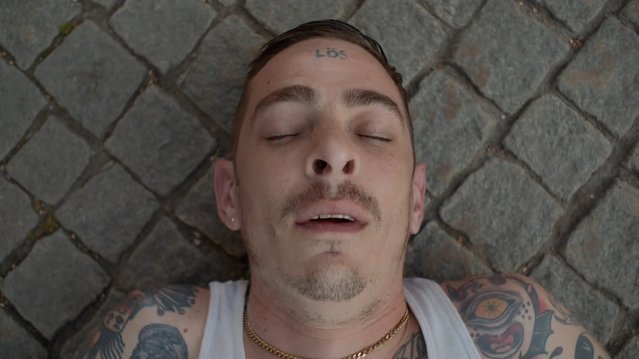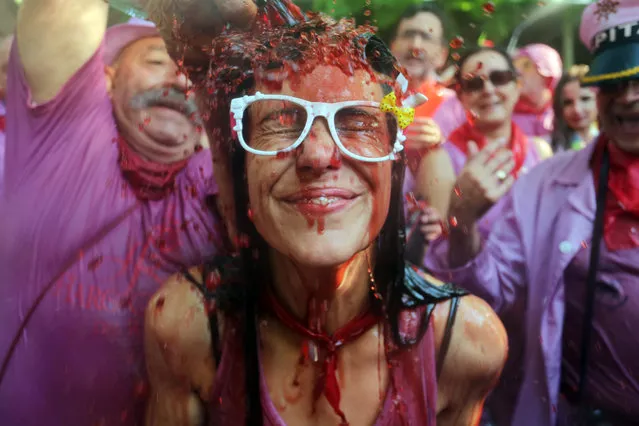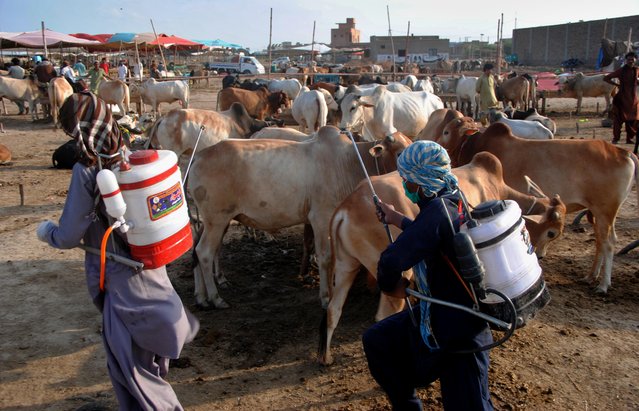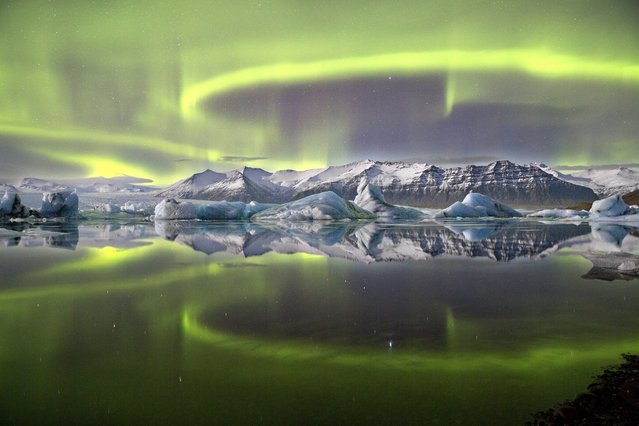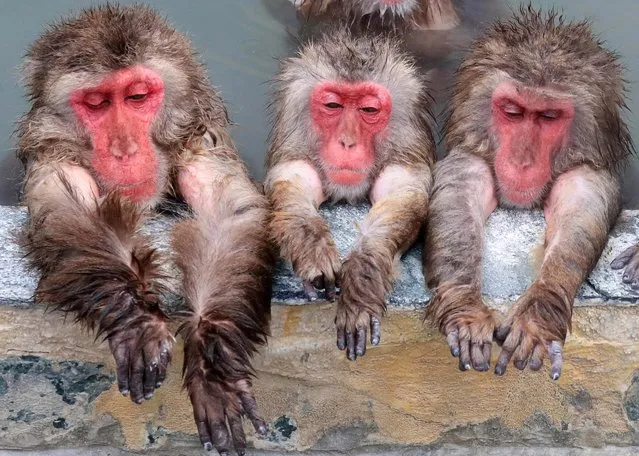
Japanese macaques are relaxed in an outdoor hot spring bath at Hakodate Tropical Botanical Garden on December 1, 2016 in Hakodate, Hokkaido, Japan. The garden offers the hot spring treatment to macaques until May next year. (Photo by The Asahi Shimbun via Getty Images)
02 Dec 2016 11:37:00,post received
0 comments

